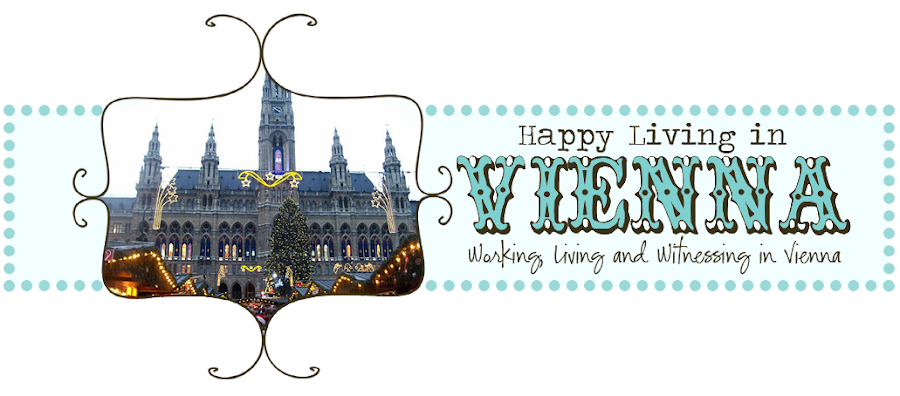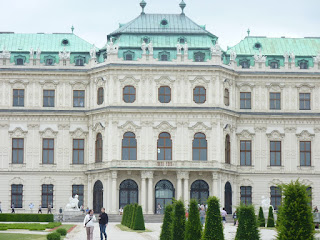We were privileged to have Kathleen and Brianna visit us for four days. We knew Kathleen and her family when we lived in Fairfax, VA. She and Brianna (from Atlanta) are interning at the US Embassy in Athens, Greece for the summer. They certainly packed in a lot of sightseeing in the short time they were here. I was able to go with them a few days. We visited the Belvedere Palace, the Military Museum, the UN, Hundertwasserhaus, and an Austrian Heuriger. One evening we strolled around Stephansplatz and of course, consumed a little Gelato.
Belvedere Palace
(former residence of the Prince of Savoy)
This is a 15 minute walk from our apartment.
We really enjoyed eating one evening near the Vienna Woods at a Heuriger. These are typically family owned little outdoor cafes, each boasting it's own distinct wines grown in their vineyards. Bruce and Barbara joined us.
The Hundertwasser house, designed by Austrian artist Friedensreich Hundertwasser, was built between 1983 and 1986. It features uneven floors, a roof covered with earth and grass, and large trees growing from inside the rooms, with limbs extending from windows. Hundertwasser took no payment for the design of the house, declaring that it was worth it, to prevent something ugly from going up in its place.
Within the house there are 52 apartments, four offices, 16 private terraces and three communal terraces, and a total of 250 trees and bushes. The Hundertwasser House is one of Vienna's most visited buildings and has become part of Austria's cultural heritage.

Greg was able to give the girls a tour around the United Nations building, showing them his office and describing what he does. It was a very hot day and we welcomed eating lunch in the air conditioned cafeteria.
The Heeresgeschichtlisches Museum (History of Military Museum) was the first Viennese museum. The styles of this town's oldest historic building range from Byzantine, Hispano-Moorish to
Neo-Gothic.
In five major sections the museum shows the history of the Habsburg empire from the end of the 16th century until 1918 and Austria's fate after the dissolution of the monarchy up to the year 1945.






















